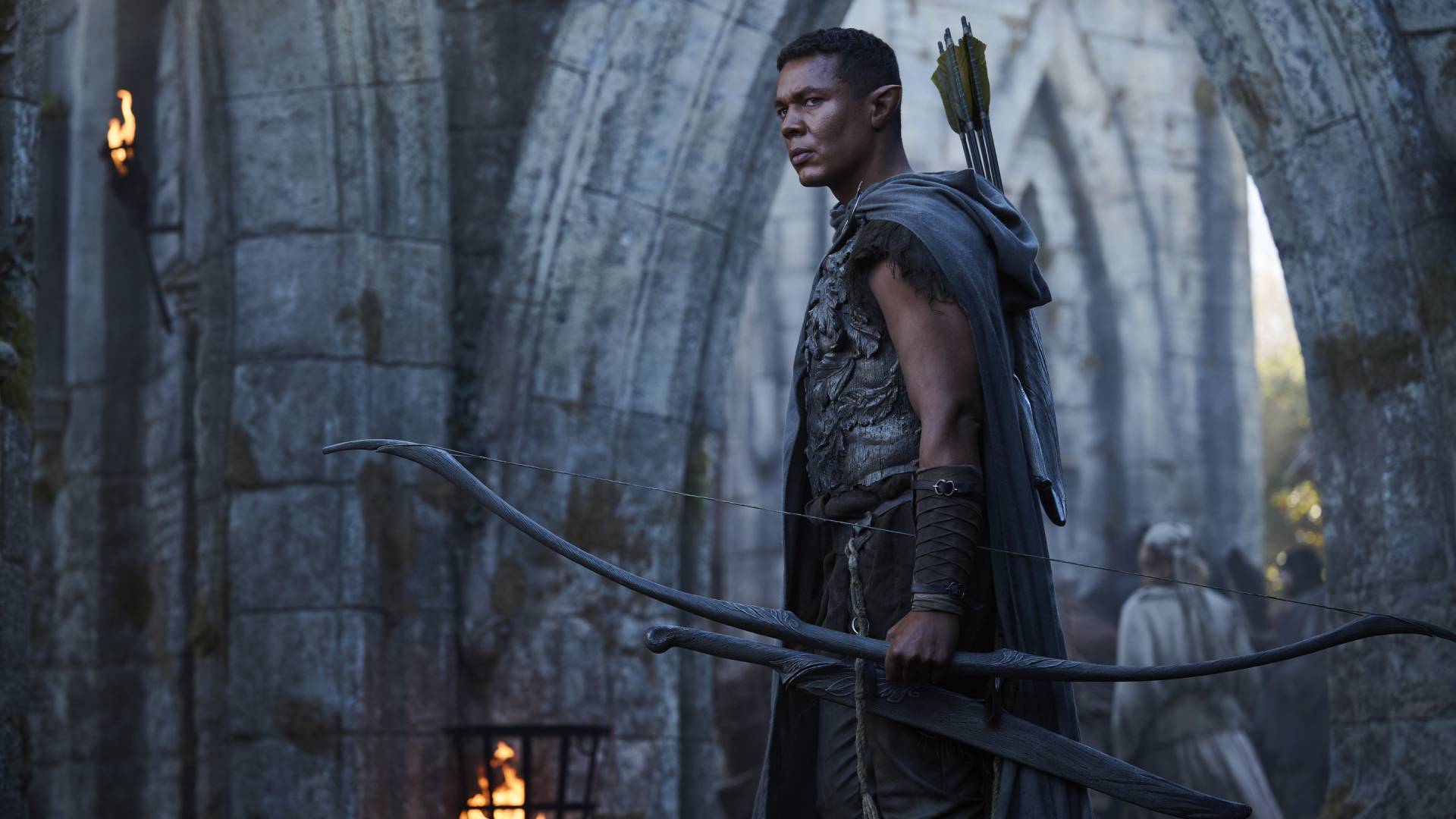
In the land of Mordor where the shadows lie, evil has risen. Sauron, formerly Halbrand, walks upon the ashen mountains of Middle-earth having recently unveiled himself to Galadriel, while Adar, the father of orcs, regroups with his children. Yet darkness has spread far beyond Mordor’s dreaded borders: in Khazad-dûm, the caves are crumbling; across the sea, Númenor faces civil war; and in Lindon, the light of the elves dims. This is where the first season of The Rings of Power – the prequel to The Lord of the Rings, bringing the Second Age of J.R.R. Tolkien’s mythos to life – ended, but not where the follow-up begins.
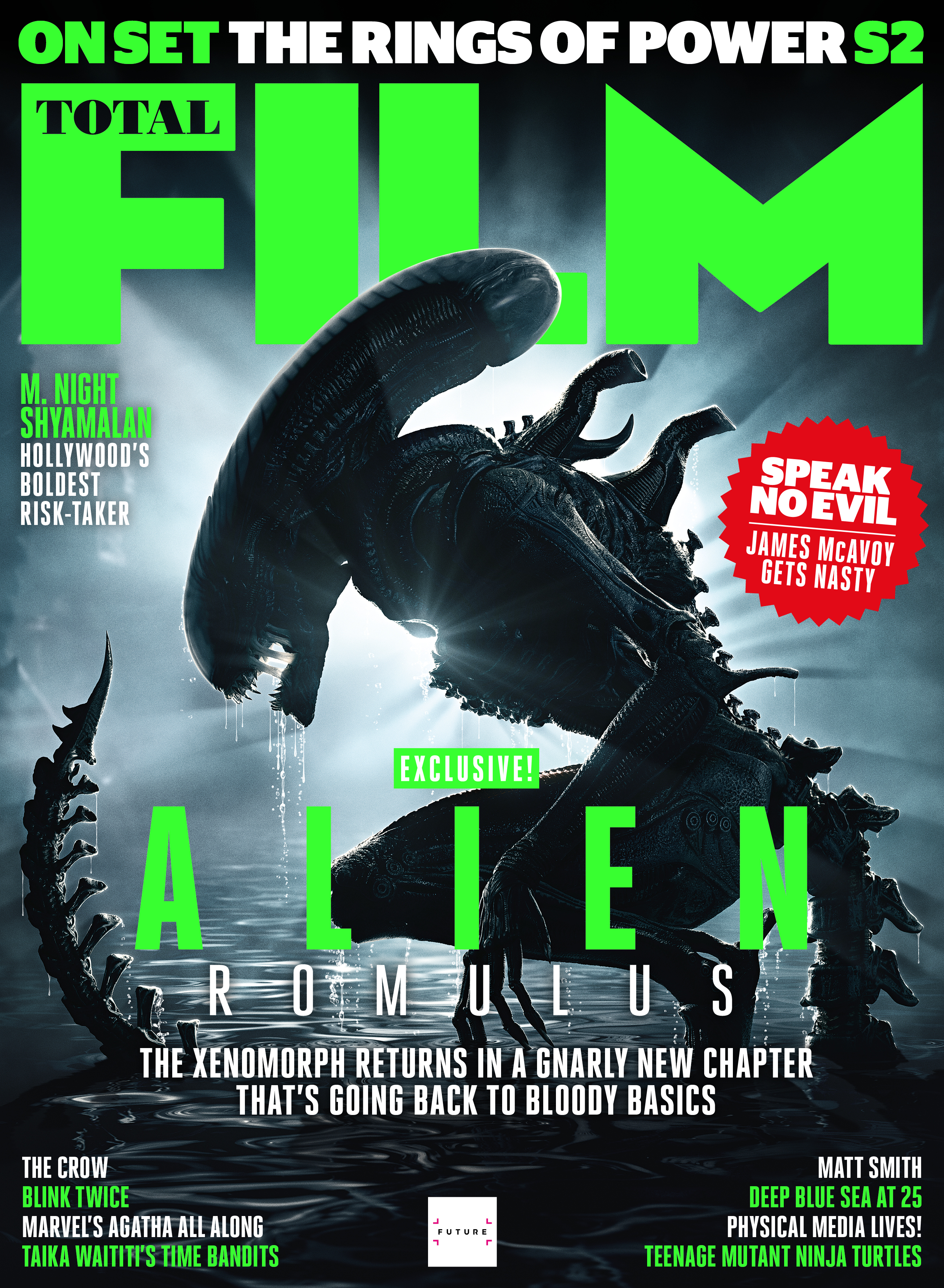
This feature originally appeared in issue 353. Buy a copy here.
"Do you want to hear the opening?" an excited Patrick McKay, co-showrunner with J.D. Payne, asks Total Film. It’s a cold morning in April 2023 and we’ve just witnessed the filming of a monumental battle between orcs and elves outside the walls of Eregion (more on that later). We have now parked ourselves somewhere a little warmer, inside Bray Studios, near Windsor, to hear what the showrunners have been filming.
"We open in the darkness, an orc walks in, and we see there are thousands of orcs gathered," McKay says. It is the end of the First Age, Morgoth has been defeated, and Sauron demands fealty from his followers. "He’s about to be crowned, pitching his vision of Middle-earth, and right before they lay the crown on his head, his right-hand man, Adar, turns it upside down, and stabs him in the back. It’s the assassination of Sauron."
It’s a bold opening that sets the tone for what’s to come. "Right from the beginning, Sauron [played by Charlie Vickers] is the centre of gravity," McKay says when we catch up a year later. "It’s an ensemble show, but the focus is starting to get pulled towards him. He’s driving everything."
As a result, Galadriel, last season’s primary lead, shares the spotlight. For actor Morfydd Clark, though, there was still lots to do. "There’s always about three things filming at once," she says, echoing executive producer Lindsey Weber’s claim that The Rings of Power is the only show shooting three units simultaneously. "And as a nerd for it myself," Clark continues, "it’s so fun to find out more about these other characters."
After spending a season hidden from sight, Sauron’s return impacts the lives of every race: dwarf, harfoot, elf, man and orc. But perhaps more than anyone, the Dark Lord’s comeback puts the show’s spotlight on Celebrimbor, the Elven smith played by Charles Edwards. When Sauron returns to Eregion, he essentially gaslights Celebrimbor into making more rings by presenting himself not as Halbrand but as Annatar, Lord of Gifts.
"What makes Celebrimbor so interesting is how susceptible he is not only to flattery but also to someone with power," Edwards says. "Regardless of how wise you are, if a god walks into your living room and says, 'I’m going to open up your world view,' you go with it. Outsiders may call it foolish, but Sauron cast a spell on him the moment he saw him."
Elf discovery
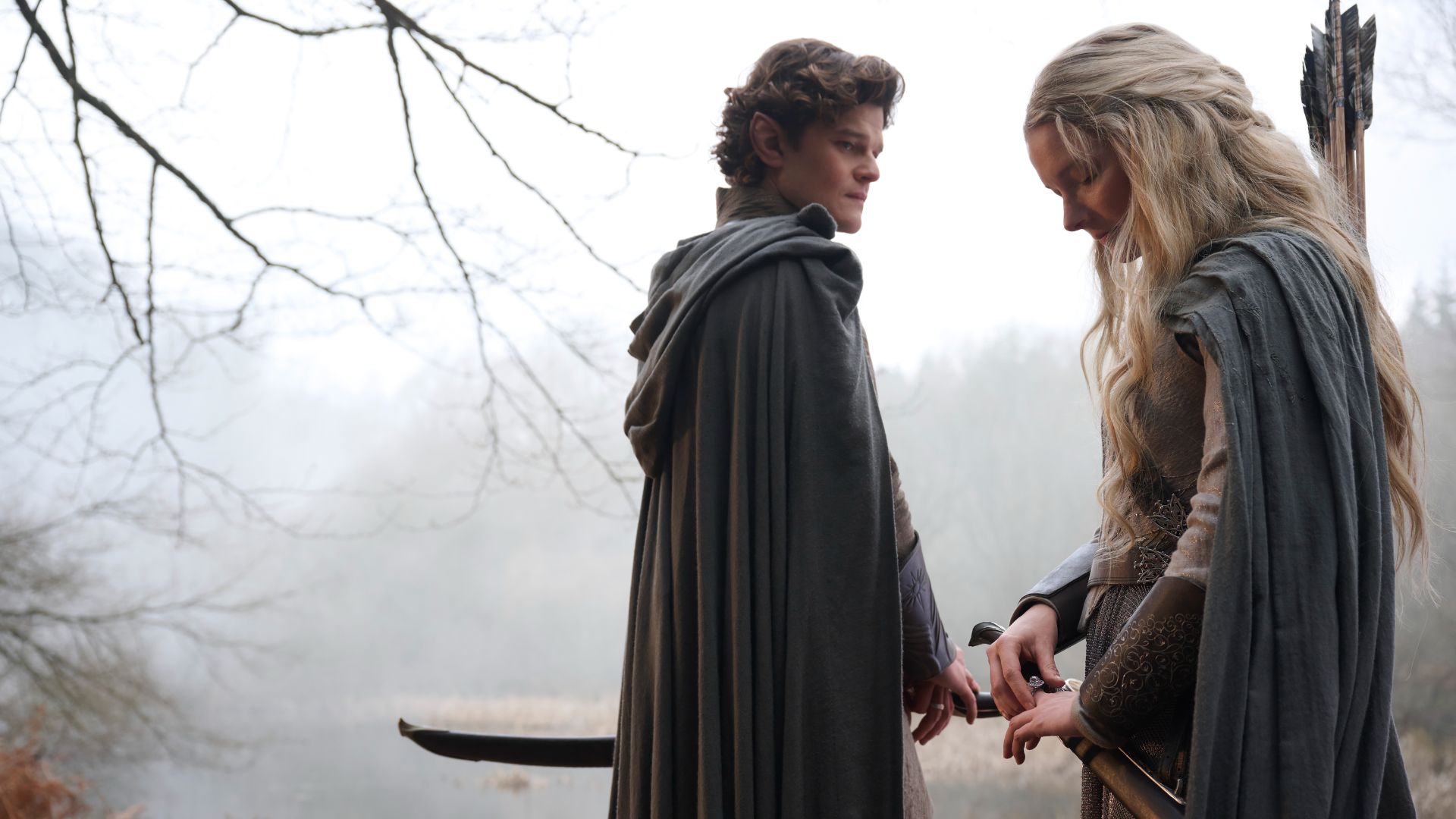
But what of those three rings for elven kings forged last season? Elrond’s taking them to Lindon’s leader Gil-galad in the hopes he will destroy them, while Galadriel’s chasing Elrond, wanting to use the rings to save their kin. "Conflict has been a part of their relationship but it’s more overt now and operates in a different way," Robert Aramayo, who plays Elrond, says. "It makes it complicated as he cares about her, he loves her. It’s really complex."
As we know from Tolkien’s work, Gil-galad chooses to use the rings, thus keeping the elves in Middle-earth, and gifts the others to Galadriel and Círdan, a new character played by The Crown’s Ben Daniels. Círdan is a mentor to Elrond. "It was exciting, selfishly, to be a part of that character’s introduction, because he’s such an amazing character," Aramayo continues. "He’s absolutely fascinating and so unique."
Círdan is one of many new faces introduced this season. One of the best-known newcomers is Ciarán Hinds, who portrays a mysterious wizard hunting down Daniel Weyman’s other wizard (long suspected to be Gandalf) as he traverses the desert landscape of Rhûn. "We really are excited for the audience to see where that journey goes," McKay teases without giving anything about the character away. They instead point out that Rhûn’s introduction marks the first time we’ve seen deserts in Middle-earth. They were filmed in Tenerife and give the show a Lawrence of Arabia feel.
The showrunners are more open to discussing Rory Kinnear’s Tom Bombadil, the jolly immortal who has rarely been adapted for the screen despite appearing n Tolkien’s The Fellowship of the Ring. Bombadil becomes a companion on The Stranger’s quest to find his own identity.
"It was the opportunity, not of one lifetime, but many lifetimes, to write Tom Bombadil," says Payne. A quarter of the character’s dialogue comes straight from the books, and the writers meticulously researched how Tolkien adapted Anglo-Saxon verse to create the rest. "One of the moments I love best about this season is when The Stranger asks, 'Who are you?' And Bombadil just says, 'Eldest.' He’s wacky and sings songs, but when he says that, you get this sense of, 'Oh, he’s been around for thousands of years.'"
"For The Stranger, when he comes across Tom, his brain is being expanded," adds Weyman. "There’s an expansion of understanding and time and what that means for him. It was a lovely way for us to explore what it means to be a character who actually knows about the singing-into-being of the universe, the years of the trees. That’s really fascinating."
Production on the series moved from New Zealand to the UK, which led to VFX artist Jason Smith coming aboard the series. He was asked by the showrunners what he wanted to see more of. "Creatures," he answered, and his wish was granted: the new season features Barrow Whites, Ents, Eagles, a few familiar water creatures, and a certain spider.
Smith emphasises capturing things in-camera. For the Barrow Whites – terrifying, ghastly white creatures – they used contortionists who could pop bones out of place. "We were watching them work like, 'How can this be real?'" Clark says. "We barely had to do any of the green-screen imagining stuff."
Isildur, last seen M.I.A. after being defeated in battle, makes his grand return to the show stuck in a spider’s web. "That was a wet, muddy set, and a lot of it was done for real," says Maxim Baldry, who plays the future King of Gondor. "There were these spider-lings done with a puppet master. I watched it on a monitor and couldn’t believe it wasn’t CGI."
Orc this way
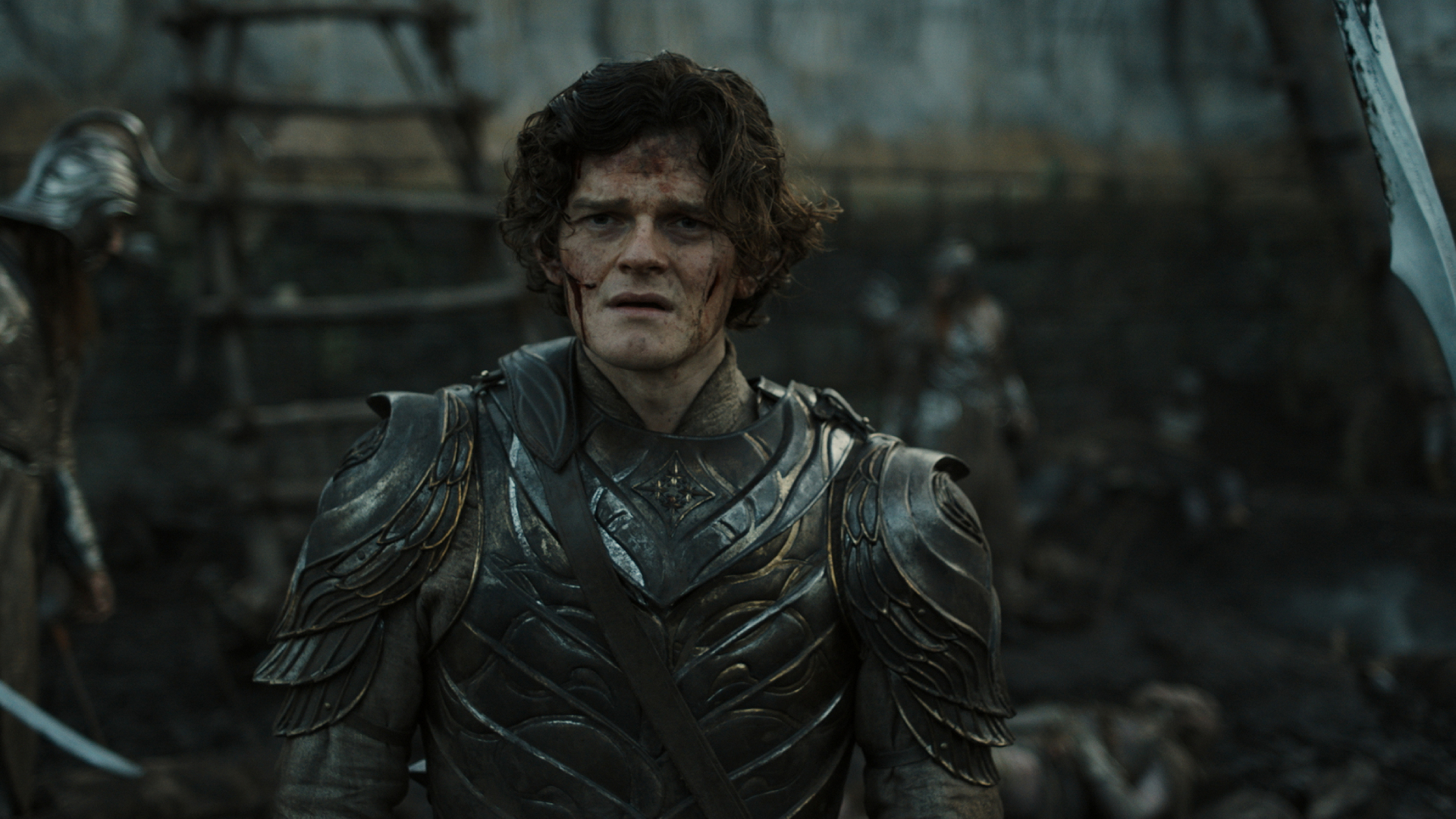
Total Film witnesses some of the show’s in-camera magic first-hand. Hidden away in a British forest west of London, not unlike the forests that inspired Tolkien’s work, there’s a huge tent, and inside are hundreds of orcs getting their hair done. It takes two and a half hours to prepare just one of these gruesome beasts, with fresh prosthetics being created every day. One artist says over 1,500 pairs of ears have been made. An orc sips a green smoothie through a straw as they wait for their paint to dry.
As TF steps outside, an opening in the forest and the huge stone wall of a castle, first constructed in December, dominate the view. The flags of Eregion blow in the wind while dead Elves are scattered across the treacherous landscape. In the distance, a half-dozen mammoth trebuchets are hidden in the trees. The orcs – no health drinks in hand – are midway through the battle, tearing someone apart, and they look utterly vicious.
"Those orcs are very effective when they’re running around all frightening and angry," says Clark when we meet again in the less-muddy comfort of a London hotel. "Even though you know [they’re just actors], I always have one take where I’m just [makes a scared noise] because it’s so effective."
The battle of Eregion will be this season’s major centrepiece as the orcs march on the elven realm. "We really wanted to be disciplined with Season 1, knowing that Season 2 would lead into Sauron essentially bringing an army of orcs to Eregion to claim the rings," says Payne. "That by necessity means you’re dealing with vast armies, and you’re dealing with multiple armies, you’re dealing with orcs and you’re dealing with, at a certain point according to canon, the dwarves. We know Elrond is going to become involved."
"By nature, it has to be a much grander, bigger battle," Payne continues. "But we never want to get into battle fatigue, armies clashing, and it’s anonymous. It’s all about the emotional impact. The seventh episode of this season is something else."
The battle is only a part of the show’s rich tapestry, the show fully embracing its ensemble nature, the showrunners’ inspired by the way The Wire reintroduced characters across multiple episodes each season. And thanks to this being a sprawling TV series, each story strand – whether dwarven or Númenorian – is given room to breathe, leading to some unexpected turns.
For instance, when we meet the dwarves again, Durin IV (Owain Arthur), having been disowned by his kingly father, and his wife, Disa (Sophia Nomvete), are worrying about money. They talk about tightening their purse strings while bargaining for food at a market. It’s a conversation unlike anything else we’ve heard in Middle-earth. Meanwhile, in Adar’s encampment, there’s a female orc with what appears to be a baby.
"There were little hints in Season 1 of where we wanted the show to go tonally," says McKay. "The later episodes really established this darker, more grounded tone." He points to how director Charlotte Brändström, who helmed episodes six and seven, and returns for four episodes this season, found a sweet spot delivering a fantastical show that lets you sink into its world. "There’s greater depth with the characters and what they’re all grappling with and how they’re motivated."
That orc with the baby ("Allegedly an orc baby," corrects McKay, "it’s never actually on screen, though you sure hear something that sounds like it might be [a baby]") goes on to have a surprisingly important role in the series. "He’s questioning the motives of his orc father," says McKay. "This orc asks, 'Why do we have to go to war again when we have this homeland [in Mordor]?” He’s an Orc with an arc."
It’s not only an orc who’s getting a Tolkien-ien redemptive story. "The villains often have something redemptive at their centre, even Sauron," McKay says. "In his own twisted way, he thinks he’s healing Middle-earth... There’s an earnestness to stories in Middle-earth and we happily embrace that."
Power moves
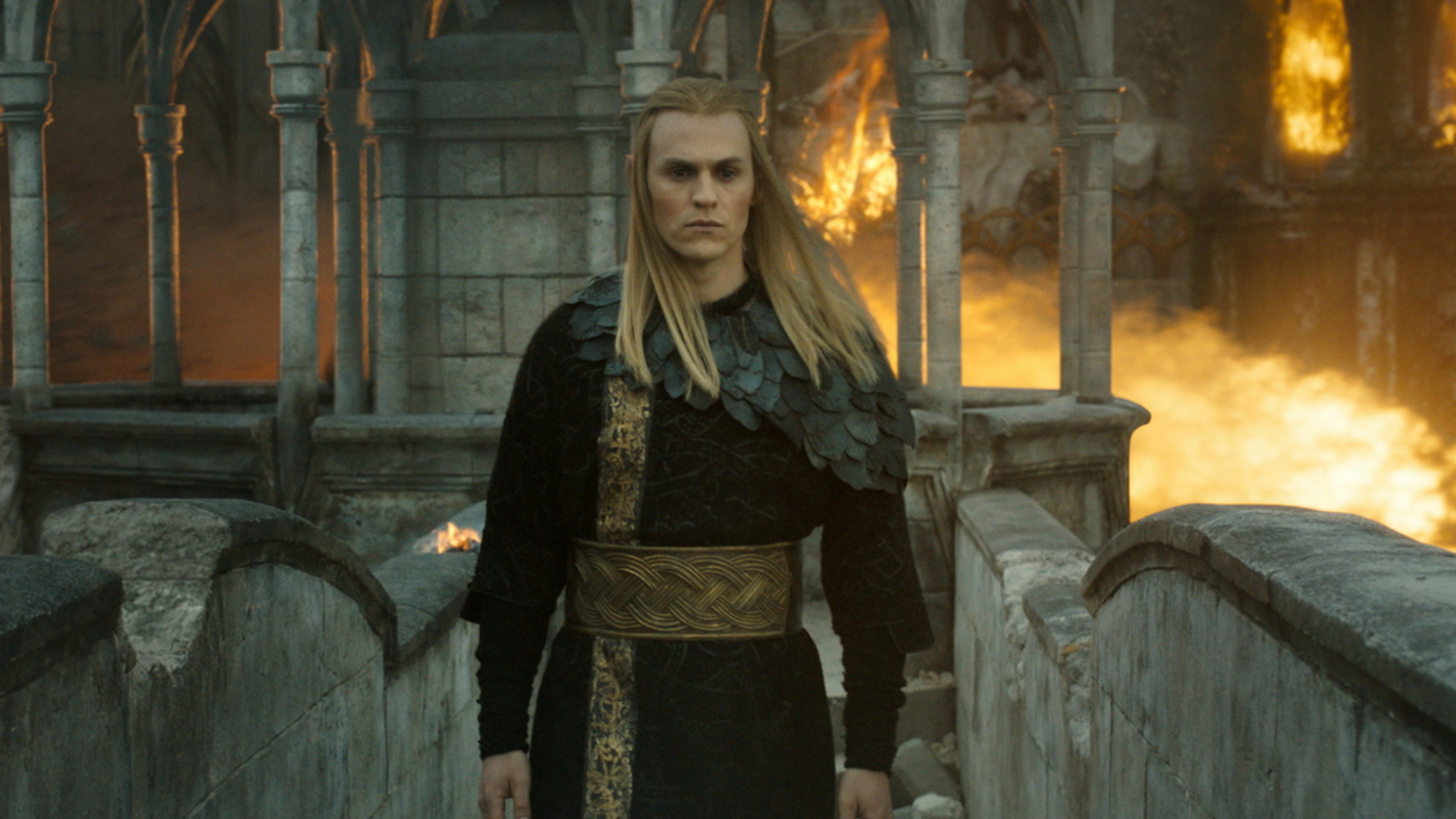
Back on set, Total Film notices a collection of particularly interesting props, some of the 10,000-plus individual items made for the second season. The production team walks us around the throne room of Númenor – an exquisite, gigantic room, where every detail has been meticulously crafted – where they have laid out a few tables covered in jewellery. Indeed, there are a few precious rings on display.
This season, of course, brings us one step closer to the events of the main The Lord of the Rings trilogy, and certain characters are becoming more like their older counterparts. For Isildur, this season’s about going from "boyhood to manhood", as Baldry puts it, while Elrond and Galadriel both have scenes that echo their movie selves. "History does repeat itself," teases Clark, while Aramayo adds: "The show started in the Golden Age of the elves and things are becoming more Third Age-y."
At some point this season, Galadriel gives in to temptation and accepts an elven ring despite knowing Sauron’s part in forging it. The moment directly mirrors her temptation in The Fellowship of the Ring. "That’s the first breadcrumb on the trail of this entire show," the showrunners say of the original Fellowship scene. "You should be believing she could be an absolute hero and totally good, and at the same time, she has a serious Achilles heel of pride and weakness and vanity and lust for power."
We will have to wait another three seasons to see Clark’s Galadriel fully become like Cate Blanchett’s version, as the showrunners are sticking to their initial pitch: "This was always the plan, to continue telling this five-season story... We have all kinds of ideas for the third and the fourth and the fifth. But, there’s a long road ahead."
And moving forward, they won’t be the only ones in the Tolkien business: Peter Jackson is producing a new film, The Hunt for Gollum, with Andy Serkis directing. "Tolkien’s world is so vast that it could support 100 shows and movies, and still only scratch the surface," Payne says. "This was the man’s life work and there are over 9,000 years of history, a dozen in-world languages. You could do the Beren and Lúthien show if you wanted to. Go down any corridor and there’s a story there. We’re glad there are more stories in Middle-earth being told."
"And we’re staying in our lane," adds McKay. "We have a 50-hour epic that we’re only 16 hours into crafting, and we’re seeing it through." Evil has risen in Middle-earth and we’ve only just started exploring it.
The Rings of Power season 2 begins on August 29 with a three-episode premiere. For more, check out our guide on how to watch all the Lord of the Rings movies in order.





!["[T]he First and Fifth Amendments Require ICE to Provide Information About the Whereabouts of a Detained Person"](https://images.inkl.com/s3/publisher/cover/212/reason-cover.png?w=600)

